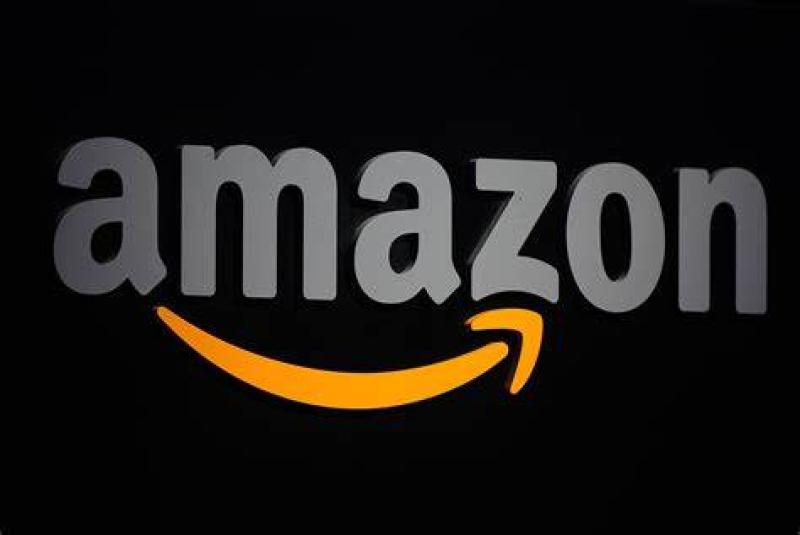Amazon and Other Tech Giants Race to Buy Up Renewable Energy - WSJ
By: Sam Schechner (WSJ)



The race to secure electricity deals for power-hungry data centers has tech companies reshaping the renewable-energy market and grappling with a new challenge: how to ensure their investments actually reduce emissions.
Amazon.com Inc. said it planned Wednesday to announce commitments to buy 1.5 gigawatts of production capacity from 14 new solar and wind plants around the world as part of its push to purchase enough renewable energy to cover all of the company's activities by 2025.
Tech companies are wielding their balance sheets to finance solar, wind and other renewable-energy projects on an unprecedented scale. In some countries, developers say tech companies' willingness to spend upfront—signing commitments to buy energy at a certain price for long periods—has helped make corporations more important than government subsidies as the main drivers of renewable investment.
Amazon, Alphabet Inc.'s Google, Facebook Inc. and Microsoft Corp. are four of the top six corporate buyers of publicly disclosed renewable-energy- purchase agreements, accounting for 30%, or 25.7 gigawatts, of the cumulative total from corporations globally, according to the research firm BloombergNEF. Amazon is the largest corporate purchaser world-wide, with other top purchasers including the French oil company TotalEnergies SE and AT&T Inc.
"It's almost like a stampede for clean energy," said Michael Terrell, director of energy at Google.
The scale of these investments is placing the tech companies under pressure to show that the projects actually add new renewable capacity to the energy grid instead of sucking up pre-existing supply. A thorny issue is whether tech companies’ green-power purchases replace power generated from carbon-emitting plants or simply increase power generation to feed growing global energy consumption. That is important because the companies want to tell consumers and investors that they are helping to reduce absolute carbon output, not just shifting it around.
“Just because you put a clean electron on the grid doesn’t necessarily mean you’re displacing a carbon-based electron,” said Brian Janous, general manager of energy and renewables at Microsoft. Mr. Janous said Microsoft is now analyzing power grids to determine at which locations and times of day additional renewable-energy production would replace the most production from existing fossil-fuel-powered plants to determine where to invest.
Amazon’s latest projects, across seven U.S. states as well as Canada, Finland and Spain, have pushed the firm’s signed commitments to a total of 10 gigawatts of renewable production, the company said. After the new deals, Amazon is the top all-time corporate purchaser of clean energy in the U.S., according to the Renewable Energy Buyers Alliance, a group of companies that promotes renewable-power procurement. The new plants, which will supply company operations including Amazon’s cloud-services arm, Amazon Web Services, are scheduled to come online in the next one to three years.
Nat Sahlstrom, director of energy at Amazon Web Services, said the company looks for projects where it can be first to set up a commercial template other companies can follow to help jump-start demand. He added that Amazon only selects projects based on whether its purchasing commitments are pivotal to the projects’ viability. “If not for our investments in these projects, they would not have gone forward,” he said.
Google, which said it matched its energy consumption with renewables beginning in 2017, says it now has a tougher goal: aligning its consumption with renewable energy not just annually but hour by hour. That means the company is trying to make sure there is sufficient carbon-free energy on electrical grids where it operates at the times when it is using power, including at night and at times of peak demand.
“I think the evolution is to focus not only on the quantity but also the quality of sourcing,” Mr. Terrell of Google said.
Driving the purchases are skyrocketing data usage and computer processing. In the past decade, growing efficiency has largely offset rising usage, in part as companies shifted from on-premises computer servers to more-efficient cloud providers, according to the International Energy Agency. But while there is more efficiency to tap, according to researchers, it isn’t clear for how much longer, particularly with the rise of 5G networks and as more of the world lives and works online.
“The data-center industry is one of the largest power consumers world-wide,” said Stefan-Jörg Göbel, a senior vice president of wind and solar for the Norwegian energy company Statkraft AS. “They’re reshaping the demand side of the industry just from the pure physics of it.”
Data centers were estimated to account for roughly 1% of global electricity use , according to a 2020 paper in the journal Science.
Big tech companies say they have built up in-house teams staffed with former deal makers at electrical utilities who can source deals directly with providers, often sidestepping an industry of middlemen and brokers that generally handle power deals. Firms such as Amazon often blanket a country where they have operations with requests for energy projects, according to developers.
“We’ll say, hey, we want to go look at every potential project that could be in development in a country,” Mr. Sahlstrom of Amazon said of his team that seeks out power-purchase agreements, or PPAs.
Developers of wind- and solar-energy projects say demand from big tech has encouraged a rise in demand for PPAs from other corporate buyers . Because the projects require heavy upfront investment that takes years to recoup, banks often won’t finance them—or will give less favorable terms—unless the projects have an anchor purchaser promising to buy most or all of the production, according to developers and energy financiers.
In Spain, where Amazon has committed to buying power from five solar plants, developers say multiple big tech companies are looking for new deals.
“We’re talking to all of them,” Martin Scharrer, who leads such negotiations for the renewable-energy producer Encavis AG ECV -0.71% , said of the tech companies. Mr. Scharrer previously struck a deal with Amazon to sell energy from a solar plant outside Seville, Spain.
Facebook said that it reached its goal of buying enough renewable energy to cover its global operations, including data centers, last year but that it is continuing to strike new power deals because its energy use is growing. Facebook’s electricity use rose 39% in 2020, according to its annual sustainability report. “It’s showing that voluntary targets are really moving the market,” said Urvi Parekh, director of renewable energy at Facebook.
Microsoft said it has power-purchase deals that it hasn’t yet announced that will catapult it to near the top of the world’s biggest green-energy buyers. Mr. Janous said his company focuses on shared environmental goals rather than rankings, but added: “We know what the rankings are and, trust me, my boss knows what the rankings are, and any time there’s a new one that comes out, I hear about it.”




